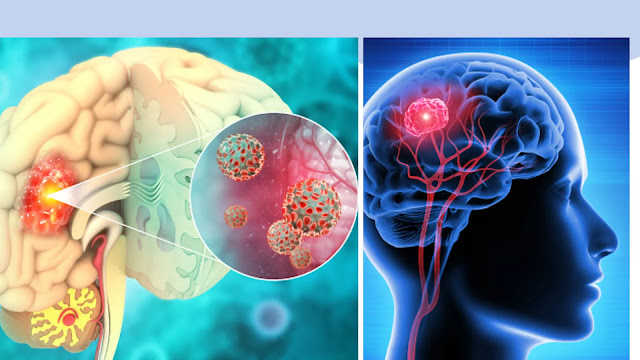Brain tumors can be distinguished or named in one of two ways:
Grades I and II are referred to as benign or low-grade lesions because they develop slowly in the brain, exhibit minimal proliferation, and have a high likelihood of being cured. However, this does not imply that they do not need attention or treatment.
Grade III and IV are categorized as a malignant or high grade because they have a high likelihood of quickly metastasizing, spreading to other organs, and dying.
What factors determine whether a tumor is benign or malignant?
It is impossible to determine what causes a tumor to be "good or bad" or to change from something benign to something more dangerous. Multiple factors may eventually lead to changes in the cells, which make them lose their ability to regulate their own reproduction and give rise to tumors.
Although there is no known cause, there are some things that make having a brain tumor more likely. These could be risk factors, according to the American Brain Tumor Association:
See Also: How to Properly Do Pilates Breathing Techniques to Get Rid of Back Pain- Biological or inherited
- exposure to chemicals, pollutants, or industrial products, for example,
- seizures and head injuries
- exposure to viruses, bacteria, and allergens
Can congenital brain tumors occur?
Unfortunately, some tumors in children are caused by genetic issues from the time of their formation, making them more likely to develop them. As a result, there are cases where children are born with malignant tumors of the brain, spine, or spinal cord.
A benign or malignant tumor can be identified and treated early in adults, but because of a child's strong genetic makeup, this is not always possible.
Types of brain tumors:
There are a huge variety of brain tumors, and just like how each person's symptoms are unique, there are some tumors that are more typical than others, according to the World Health Organization.
Meningiomas are benign tumors that develop from the meninges, the membranes that cover the brain and spinal cord.
These benign tumors, known as schwannomas or acoustic neuromas, develop on the inner ear nerves that regulate balance and hearing.
Astrocytomas, ependymomas, glioblastomas, oligoastrocytomas, and oligodendrogliomas are examples of tumors known as gliomas that start in the brain or spinal cord.
Pituitary adenomas are tumors that develop in the pituitary gland or at the brain's base and affect the production of growth hormones, which have an impact on the body.
Craniopharyngiomas: These uncommon tumors develop close to the pituitary gland in the brain, which secretes hormones that regulate a variety of bodily processes. The pituitary gland and other structures close to the brain may be impacted as the craniopharyngioma grows.
What signs of a brain tumor are there?
It is very challenging to recognize the signs of a tumor because they vary from person to person and depend on a variety of variables, including size, location, growth rate, and more. However, there are some cautionary signs that may point to a problem:
- Chronic, debilitating, and unusual headaches
- nausea or vomiting without cause
- Speech, hearing, or vision issues
- Problems with balance
- speech issues
- character changes
Seizures are another factor that occurs frequently when there are brain tumors. The first thing to rule out is a brain injury if an adult who has never experienced a seizure suddenly experiences a crisis.
What therapies are available to treat brain tumors?
Depending on the severity and type of brain injury, a wide range of procedures can be used; the most well-known ones are surgery, radiosurgery, radiotherapy, and chemotherapy combined with pharmacological therapy.
In our Neurointervention Unit, we specialize in minimally invasive techniques with cutting-edge technology to treat brain tumors and other highly complex cerebrovascular pathologies like intracranial aneurysms, chemical and/or mechanical angioplasty, and acute cerebrovascular accident (CVA): Stroke Unit. At the Shaio Clinic, surgery and radiosurgery are the pillars on which we base all treatments for brain diseases.
With the help of the most up-to-date technology, radiosurgery using the Gamma Knife Perfexion, doctors can locate and treat tumors, metastases, and vascular malformations in the brain without surgery by using high-intensity ionizing radiation (gamma rays) with absolute precision and few side effects. There is no hospitalization or intensive care unit stay necessary for this outpatient procedure.
conclusion
Brain tumors can be very serious and can cause a lot of damage to the brain. If you are worried about having a brain tumor, you should talk to your doctor. They can check to see if you have a tumor and can give you advice on how to deal with the symptoms if you do have a tumor.
If you do have a tumor, you should see a doctor as soon as possible. They can do surgery to remove the tumor, or they may recommend chemotherapy or radiation therapy. If the tumor is too big or too close to the brain, the doctor may also recommend a brain transplant.
Brain tumors can be very scary, but they can



.webp)




.webp)
.webp)
0 Comments